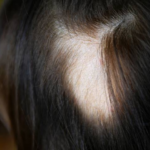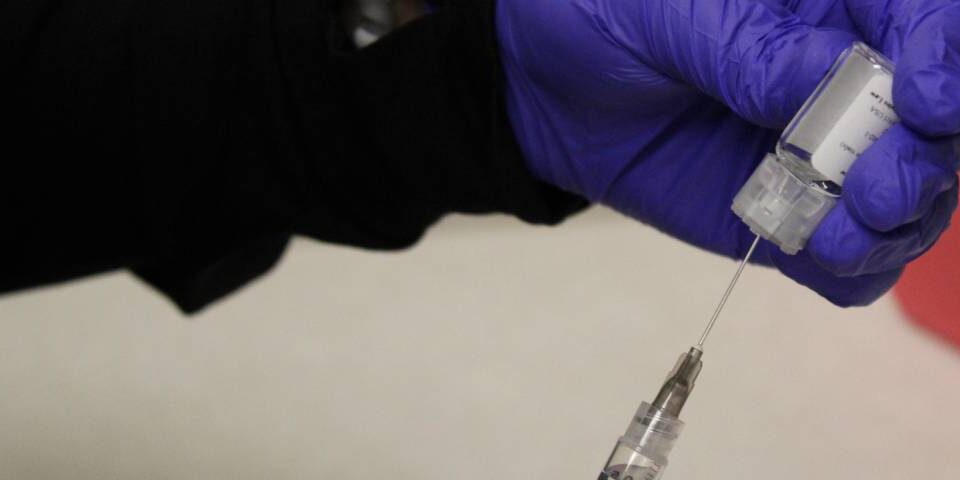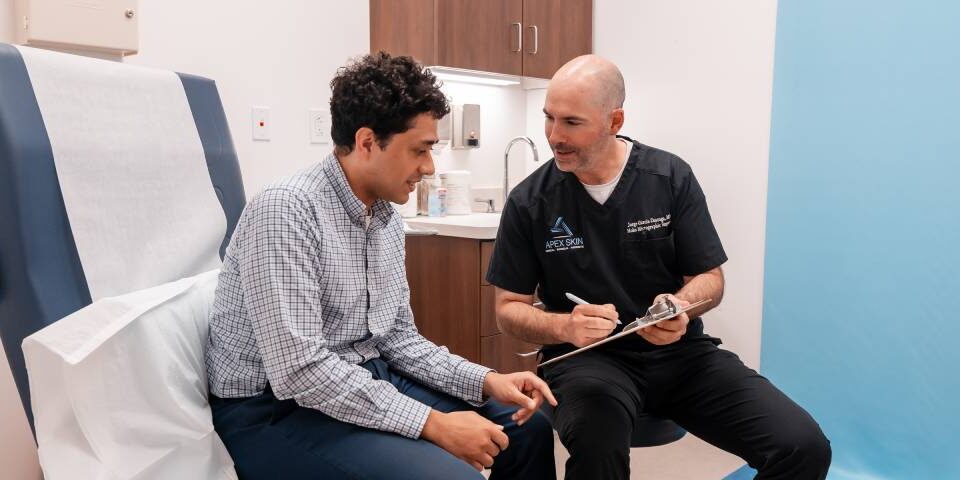
Beyond Hair Loss: New Clinical Trials for Alopecia Areata Treatments
November 5, 2024
Breaking Barriers in Pyoderma Gangrenosum Treatment
January 9, 2025Gorlin Syndrome goes by a few different names, including basal cell nevus syndrome (BCNS), nevoid basal cell carcinoma syndrome, Gorlin-Goltz syndrome, Gorlin basal cell nevus syndrome, basal cell carcinoma nevus syndrome, and, finally, basal cell nevus syndrome. That’s a lot of labels for a rare, chronic genetic disorder that can cause eruptions of basal cell carcinoma skin cancer lesions and other serious symptoms that require constant, vigilant monitoring and recurring procedures by a dermatologist to remove lesions to protect the health of their patients. The emotional, financial, and mental health toll of Gorlin basal cell nevus syndrome is intense for the 11,000 in America who live with this genetic disorder that fails to stop tumor development from getting out of control throughout the whole body, often starting with the skin. Apex Clinical Research Center understands this burden and is eager to discover better treatment options through its Gorlin syndrome clinical trials. If you or a loved one struggles with basal cell carcinoma nevus syndrome, reach out to us to learn more about this clinical trial, and read on to learn more about the current Gorlin syndrome basal cell carcinoma treatment options.
What Is Gorlin Syndrome?
Gorlin basal cell nevus syndrome (BCNS) is a chronic genetic disorder stemming from mutations in the PTCH1 gene. This mutation affects the way cells grow in the body, leading to basal cell carcinoma skin cancer and several other distressing complications such as the development of additional tumors around the body. It can also affect the nervous system, the endocrine system, the eyes, and the bones.
Gorlin syndrome affects males and females equally, and it can strike anyone. However, the genetic component of the disease is clear—70 percent of people diagnosed with Gorlin syndrome can trace a family history to the disease. The other 30 percent of people with it experience a spontaneous mutation of the gene responsible for suppressing tumor growth.
Fortunately, people who receive diligent care for the condition can live as long as people without the disease, but it requires vigilant monitoring and ongoing basal cell carcinoma treatment that can cost people a lot of time, money, and distress. Apex Clinical Research Center aims to relieve these burdens on patients by developing better treatment options through its ongoing research and Gorlin syndrome clinical trials. This provides patients and their families with new opportunities for a better quality of life.
Gorlin Syndrome Symptoms
Gorlin basal cell nevus syndrome patients experience some difficult symptoms, but the most common one is the eruption of basal cell carcinoma skin cancer lesions. Developing two or more basal cell carcinomas before the age of 20 is an indicator of the disease, but other symptoms include:
- Jawbone cysts that begin to form during adolescence
- Small pits or indentations in the palms of the hands or soles of the feet
- Facial milia (white cysts or bumps along the skin)
- Skeletal abnormalities in the ribs or vertebrae (visible on X-rays)
- Facial and forehead abnormalities (a larger head size because of abnormal calcification on the skull, which is visible through X-rays)
- Wide-set eyes, crossed eyes, small eyes, cataracts, and/or rapid eye movement disorders
Some young patients may also have a cleft lip or palate. In some cases, people with Gorlin syndrome have a higher risk of the following complications as well:
- Higher risk of childhood brain tumors
- Higher risk of ovarian fibromas (benign tumors)
- Higher risk of cardiac growths that can cause arrhythmia
Any of these symptoms can cause distress, anxiety, and a weighty burden of long-term health concerns. Recurrence, fear of recurrence, and anxiety about repeated treatments and appointments can cause emotional and mental health distress as well.
Diagnosing Gorlin Basal Cell Nevus Syndrome
Gorlin syndrome is often diagnosed in childhood, as the aforementioned symptoms appear and start causing pain and difficulty for the child. Symptoms can manifest as early as infancy, but age 20 is the median age for a diagnosis. Healthcare providers evaluate the physical characteristics of patients, looking for symptoms such as cysts on the jawbone, translucent skin papules, and pitting on the soles of the feet and palms of the hands. Healthcare providers may also order X-rays and genetic testing for a conclusive diagnosis and to monitor any skeletal problems.
Your healthcare provider will also ask about your family history of cancers, particularly skin cancer or any similar symptoms that could indicate a history of Gorlin syndrome since the majority of cases stem from a gene mutation.
One key indicator is the appearance of two or more basal cell carcinoma skin cancer lesions in younger patients under the age of 20. This can sound the alarm since this type of skin cancer is more likely to appear in people over the age of 45 and is usually a result of unchecked sun exposure.
Current Gorlin Syndrome Treatment Options
Current BCNS treatments can help people manage the syndrome and achieve a good quality of life, but it also requires a lot of time, effort, vigilance, and repetition, since it is a chronic syndrome. Some of the current treatments to manage nevoid basal cell carcinoma syndrome include:
1. Basal Cell Carcinoma Treatment
Any basal cell carcinoma skin cancer present requires prompt treatment so it doesn't become life-threatening. Recurring lesions also require treatment. This may include some of the following:
- Topical chemotherapy treatments applied directly to the skin
- Cryotherapy to freeze off lesions
- Oral medications to support these treatments
- Photodynamic therapy: a precise form of light wave to destroy basal cell carcinoma skin cancer lesions
Staying on top of recurring basal cell carcinoma skin cancer also requires more frequent skin cancer screening exams with your dermatology provider, so any lesions can be caught and treated before they grow into something more serious. If you are a parent with a child who has Gorlin syndrome, and you see any concerning skin lesions, or you see one on yourself that concerns you, do not hesitate to schedule a same-day SPOT check appointment with your dermatology provider.
2. Surgery
Surgeries may also be necessary to remove jaw cysts, repair a cleft lip or palate, or also to remove more extensive basal cell carcinomas. Your dermatologist can use Mohs surgery to precisely remove cancerous skin layers for smaller scars. While surgery may be necessary, it always comes with risks for infection and scarring. Repeated surgical needs can also be distressing, especially for younger patients.
3. Hedgehog Pathway Inhibitors
Hedgehog pathway inhibitors are a new class of oral medications that block the genetic signaling that activates basal cell carcinomas, regulating cells so they can develop normally. These have shown promise in hampering and even reversing basal cell carcinoma lesion growth. These medications are only recommended for patients whose basal cell carcinomas have not responded to other treatments as they can cause side effects like hair loss, loss of taste, nausea, and weight loss.
4. Radiation Therapy
A few studies have shown promise in using radiation therapy in adult patients with Gorlin syndrome, specifically for patients with multiple tumors requiring treatment. Side effects can include nausea and hair loss.
As Gorlin syndrome is so rare and so few treatments currently exist, more research needs to be done to discover better ones that can help more patients. BCNS recurs throughout life, so it requires constant monitoring and repeated procedures that can be exhausting, taking an emotional and physical toll on patients, especially when repeated surgeries are needed to control symptoms. Apex Clinical Research Center is actively running clinical trials for Gorlin syndrome treatments that can do a better job at providing lasting relief that can reduce the physical, mental, and emotional burdens faced by patients and their families.
The Promise of Gorlin Syndrome Clinical Trials at Apex Clinical Research Center
Clinical trials are an important step in the process of opening up new, better treatment opportunities that can lift the stress of Gorlin syndrome. The Apex Clinical Research Center is working on cutting-edge research to find more effective, sustainable solutions that make life easier for patients by lowering recurrence rates, reducing symptoms, and minimizing side effects. By participating in our Gorlin syndrome clinical trial, you can blaze a trail forward for yourself, your family, and other patients. Here’s what you need to know about participating in the clinical trial:
Eligibility Criteria
- Patients must have a confirmed PTCH 1 Mutation (confirmation is part of the screening process)
- Eligible patients must have two major criteria, or one major and two minor criteria (again, if you have an official diagnosis of Gorlin syndrome, you will have this already)
- Major criteria include:
- More than 3 biopsies of confirmed basal cell carcinomas on the face before screening
- Odontogenic keratocysts of the jaw that have been histologically confirmed (these aggressive cysts can become malignant)
- Four or more palmar or plantar pits at screening (small divots in the palms of the hands and soles of the feet)
- Bilamellar calcification of the falx cerebri (on the front of the skull) present at younger than 20 years
- Fused, bifid, or markedly splayed ribs
- You have a first-degree relative with Gorlin syndrome
- Minor criteria include:
- Macrocephaly (a larger-than-normal head)
- Congenital malformations such as a larger-than-normal forehead, cleft lip, cleft palate, coarse face, and eyes spaced farther apart than average for size
- Skeletal deformities diagnosed by X-ray (for example, shoulder blades are uneven, concave breastbone, webbed fingers, saddle-shaped depression in the sphenoid skull bone, and/or vertebral defects)
- Ovarian fibromas
- Cancerous brain tumor
- Participants must also have at least 10 basal cell carcinomas on the face during the randomization for the trial, to be confirmed with special photography.
The Study Drug: Topical vs. Oral Hedgehog Pathway Inhibitor
Patidegib 2% gel is a topical hedgehog pathway inhibitor that is applied to the skin for its anti-tumor activity. While there are oral hedgehog pathway inhibitor medications already in use, they come with a host of side effects. This Gorlin syndrome clinical trial aims to study the topical application of a 2% Patidegib gel to discover if it has the same efficacy but without the side effects of the oral medication.
What to Expect
Apex Clinical Research Center is currently recruiting patients in Canton and Mayfield Heights in Northeast Ohio to participate in the study. If you are eligible to participate, you’ll have close medical care monitoring in a compassionate, supportive environment. We cover all the costs related to the study. This is an excellent opportunity to discover a better, more effective, less burdensome Gorlin syndrome treatment that can improve your quality of life, as well as those of many other patients in the community who struggle with the same condition.
Join Our Gorlin Basal Cell Nevus Syndrome Clinical Trials
Apex Clinical Research Center exists to reduce the burdens patients struggle with as they seek to live a full life in spite of Gorlin basal cell nevus syndrome. Join us as we work to discover ways to make life better with the most advanced, effective Gorlin syndrome treatments. Learn more about the clinical trial today, and please contact us with any questions you have about participating.





